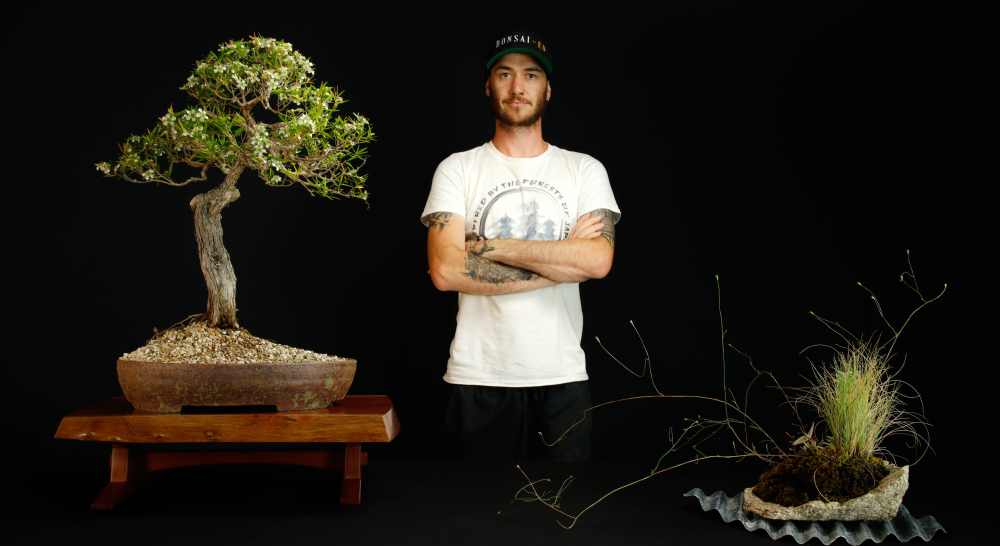Bonsai is a horticultural art form that has been practiced for centuries in Japan. By following our guide, you can bring this ancient gardening technique into your home and learn how to care for and cultivate bonsai trees.
Choose Your Tree.
The first step in growing a bonsai tree is to choose the right species for you and your environment. Consider how long it will take your particular tree species to reach maturity, as well as how much attention and care it will require. While there are over 40 popular varieties of indoor bonsai trees, some of the most common options include Japanese Maple, Chinese Elm, Japanese Black Pine, Ficus Religiosa, Juniper and Weeping Willow.
The Japanese Maple tree is a popular choice for bonsai enthusiasts and is best grown outdoors in mild climates with low humidity. It requires regular pruning and maintenance to retain its signature shape, but will reward you with brilliant red or orange foliage during most of the year. The Chinese Elm tree is one of the easiest trees to care for, making it the perfect choice for beginner bonsai growers. It can handle full sun and should be kept evenly moist by watering it as it dries, You can see a full article on Chinese Elm Here. With consistent care and attention, your Chinese elm can produce delicate fine branches in a short amount of time.
Its wise to choose species that will naturally thrive in your environment, it is possible to keep species that are outside of your climate but they require some extra attention and some times require extra set up in your garden like green houses and shade structures.
Prepare the Soil and the Pot.
After you've identified the ideal tree species for your bonsai, it's important to ensure that you create the right environment for it to thrive. This starts with an appropriate soil mixture, which should include coarse materials such as Akadama, Pumice, Lava Rock and Kiryu. If you are growing your tree in a nursery container you can use dense organic materials such as peat, riversand and fine pine bark. Additionally, it's important to select the right size bonsai pot for your tree. A pot should be wide and deep enough to fit both the tree and its soil while also allowing room for root growth.
When preparing your bonsai's pot, it's important to select one with drainage holes on the bottom. The specific size and type of pot you need will depend on the kind of tree species you've selected as well as its size and shape. Additionally, make sure to place a layer of larger particle size substrate on the bottom of your pot before adding your body mix. This will ensure that excess water can properly drain out and away from your tree's roots. With the right soil and potting container, your bonsai can enjoy the perfect environment for growth! You can see a full article on pot choice here.
Prune and Trim Your Bonsai’s Branches Regularly.
Pruning and trimming are essential to maintain a bonsai tree’s overall shape and size and to encourage ramification of branching. To do this, use angled branch cutters to snip excess foliage away from the trunk and major branches. When cutting, make sure you’re focusing on individual branches for balance; create an even distribution of new and old shoots by pruning off half of any overly extended ones that could disrupt your desired design.
Be sure to learn pruning properly though as over pruning the tree can be bad for it as it will lose a lot of its energy. When we first begin bonsai we want to trim our little bonsai tree all the time but sometimes its good to let it grow for a bit then cut it back once it has had a chance to photosynthesize with its new growth and restore its spent energy. You can see our online bonsai beginners course if you would like to learn more in depth.
Water and Fertilize Properly.
As with any plant, bonsai trees need to be hydrated and nourished in order for them to stay healthy, so it’s important to think carefully about the type of soil you put into the pot. Additionally, your bonsai will require adequate water, which means you should check the soil before watering it and only do so when soil is dry. If you think you wont be around enough to water the tree properly during the hotter months you may need to place it in a spot where it gets some morning sun but is shaded by afternoon. Its also good to keep it protected from winds in this situation as the wind can dry a tree out faster then heat. To fertilize them properly, use either an organic, liquid or slow release fertilizer. To begin with use a fairly evenly balanced fertilizer in terms of the NPK and then spend some time learning more about fertilizer as it is a very nuanced technique in bonsai. You can read our article on fertilizer here.
Periodically Check for Pests and Diseases.
It’s important to check your bonsai tree occasionally for signs of pests or disease. Common pests in bonsai include aphids, mealybugs, whiteflies, spider mites and scale. Inspect the leaves for small spots or discolorations which may indicate possible insect problems. Additionally, look for any discoloration or areas of yellowing as this could be an indication that a fungal disease such as powdery mildew is present. We have a range of Pest Sprayers And Pest And Disease sprays available if you do have a problem.
Hopefully this gives you an introduction and a start into the bonsai art.











